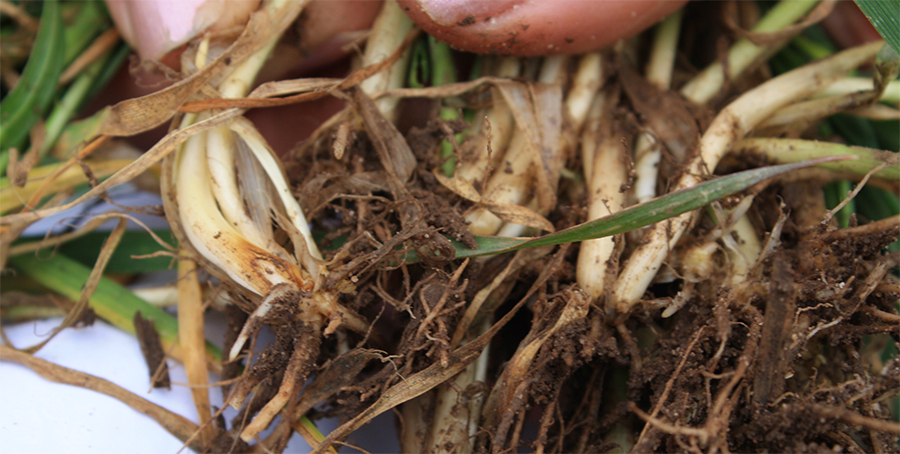
The disease is often overshadowed by the need to control septoria and rusts at T1, but with a large amount of early-sown forward wheat in the ground and high levels in some crops last year, eyespot could well be a threat given the right conditions.
With potential yield losses of up to 30% and additional harvesting difficulties from lodged crops, good control early in the season is vital, says Ayrshire-based agronomist Cameron Ferguson, who is in one of the highest risk areas for eyespot on the west coast of Scotland.
“If you don’t get eyespot controlled by growth stage 31, there is not a lot you can do about it later in the campaign. Septoria and rust understandably get the focus, but don’t forget that eyespot is lurking at the base of crops or in the soil much of the time.”
Recent colder weather will have helped reduce eyespot risk slightly, but inoculum carryover from the high levels seen last year and advanced state of many early-sown crops means there is still a reasonable threat this season, particularly in second wheats, says Dr Fiona Burnett from Scotland’s Rural College (SRUC).
Even varieties with more resistance, such as Grafton, are still susceptible to a degree if other risk factors are high, particularly wet weather over March, April and May, she says.
Control of eyespot is hard even at stem extension and targeting the stem base gets ever harder thereafter, so Dr Burnett says early action is vital.
A few tweaks to robust fungicide strategies can ensure growers are well covered for eyespot, as well as septoria and rusts, advises Mr Ferguson.
Prothioconazole is still one of the best active ingredients against eyespot, which with the backing of chlorothalonil and an SDHI such as fluxapyroxad or penthiopyrad, should form the basis of a strong all-round T1 spray, he says. Triazole rates should be kept to around 75% of label dose, he notes.
Dr Burnett believes boscalid is one of the strongest treatments for high risk eyespot situations, although if the septoria risk is also high then bixafen + prothioconazole or epoxiconazole + fluxapyroxad will give better septoria control and reasonable eyespot activity. Chlorothalonil is a useful addition to manage septoria risk, she adds.
On the east coast of Scotland, Hutchinsons colleague Iain Learmonth agrees that all growers should keep eyespot in mind when planning fungicide programmes, even if the perceived risk is not that high.
Eyespot risk is heightened where wheat follows another cereal (particularly another wheat), crops are lush and forward, and spring rainfall is high, he notes.
“But even if you’re growing a first wheat for example, eyespot can still potentially occur as inoculum can carryover on crop residues in the soil. There’s not that much variation in eyespot resistance among varieties, so you really need to make sure it’s covered at the T1 application.”
He too favours robust doses (at least 75%) of either a prothioconazole plus penthiopyrad-based mix or boscalid plus epoxiconazole at T1 where eyespot control is needed alongside good septoria control.
Mr Ferguson acknowledges that one of the biggest challenges for growers this season is the lower wheat price and the renewed pressure on margins.
“Many growers are already questioning their fungicide spend for this season given the reduction in crop value. There may be scope to make some small savings through the campaign, but much will depend on the weather and disease risk. At the moment it looks like being another quite high risk season, so accurate timing will be crucial to get the most out of products.”
